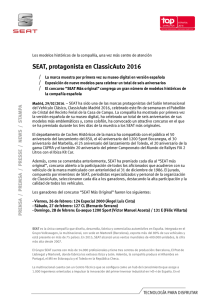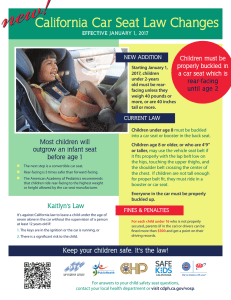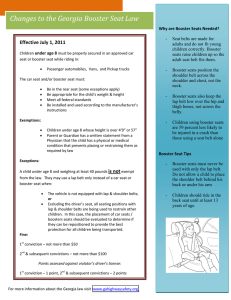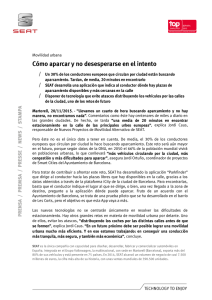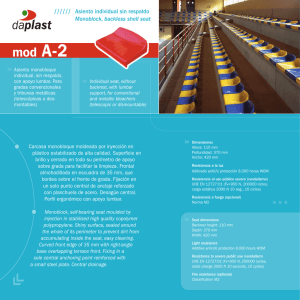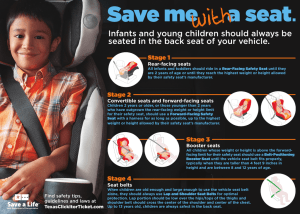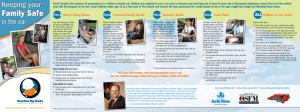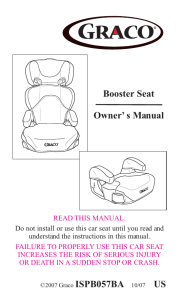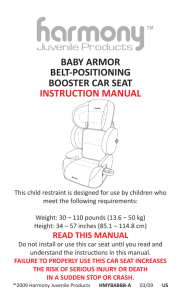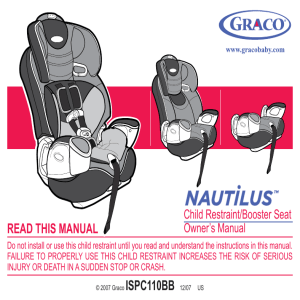BOOSTer SeaTS
Anuncio
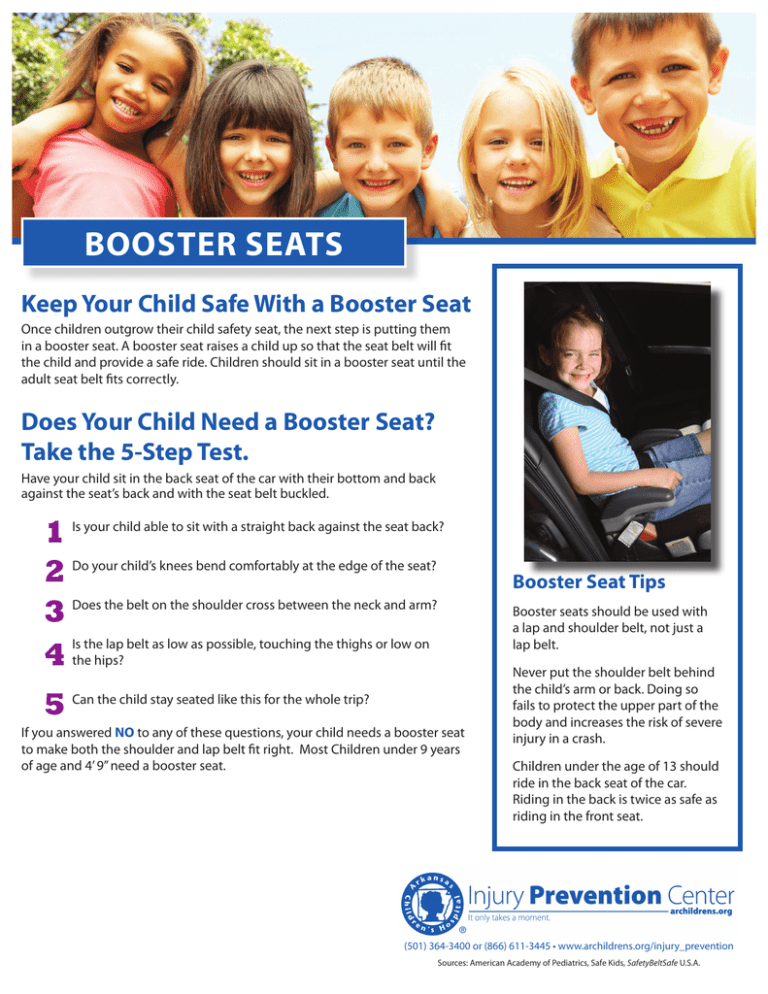
Booster Seats Keep Your Child Safe With a Booster Seat Once children outgrow their child safety seat, the next step is putting them in a booster seat. A booster seat raises a child up so that the seat belt will fit the child and provide a safe ride. Children should sit in a booster seat until the adult seat belt fits correctly. Does Your Child Need a Booster Seat? Take the 5-Step Test. Have your child sit in the back seat of the car with their bottom and back against the seat’s back and with the seat belt buckled. 1 Is your child able to sit with a straight back against the seat back? 2 Do your child’s knees bend comfortably at the edge of the seat? 3 Does the belt on the shoulder cross between the neck and arm? Is the lap belt as low as possible, touching the thighs or low on 4 the hips? 5 Can the child stay seated like this for the whole trip? If you answered NO to any of these questions, your child needs a booster seat to make both the shoulder and lap belt fit right. Most Children under 9 years of age and 4’ 9” need a booster seat. Booster Seat Tips Booster seats should be used with a lap and shoulder belt, not just a lap belt. Never put the shoulder belt behind the child’s arm or back. Doing so fails to protect the upper part of the body and increases the risk of severe injury in a crash. Children under the age of 13 should ride in the back seat of the car. Riding in the back is twice as safe as riding in the front seat. (501) 364-3400 or (866) 611-3445 • www.archildrens.org/injury_prevention Sources: American Academy of Pediatrics, Safe Kids, SafetyBeltSafe U.S.A. ASIENTOS DE SEGURIDAD ELEVADOS Mantenga a su niño/a seguro Una vez que los niños superan sus asientos de seguridad para niños, el próximo paso es ponerles en un asiento de seguridad elevado. Un asiento de seguridad elevado levanta al niño/a para que el cinturón de seguridad le quede bien y le proporcione un viaje seguro. Los niños deben sentarse en un asiento de seguridad elevado hasta que el cinturón de seguridad para adultos le encaje correctamente. ¿Necesita su niño/a un asiento de seguridad elevado? Complete la prueba de 5 pasos. Haga que su niño/a se siente en el asiento trasero del carro con su parte inferior y su espalda contra el respaldo del asiento y con el cinturón de seguridad abrochado. ¿Puede su niño/a sentarse con la espalda directamente contra el respaldo del asiento? 1 ¿Pueden doblarse las rodillas de su niño/a cómodamente al borde 2 del asiento? 3 ¿El cinturón sobre el hombro cruza entre el cuello y el brazo? ¿Está el cinturón del regazo lo más bajo posible, tocando los muslos 4 o abajo en las caderas? ¿Puede el niño/a quedarse sentado de esta manera durante todo 5 el viaje? Si usted contestó con un NO a alguna de estas preguntas, su niño/a necesita un asiento de seguridad elevado. La mayoría de los niños menores de 9 años de edad y que miden 4’ 9” (un metro y 45 centímetros) deben usar un asiento de seguridad elevado. Sugerencias sobre los asientos de seguridad elevados Los asientos de seguridad elevados deben ser usados con cinturones de regazo y de hombro, no solamente con un cinturón de regazo. Nunca ponga el cinturón de hombro detrás del brazo de la espalda del niño/a. Los niños menores de 13 años de edad deben montarse en el asiento trasero del coche. Montar en el asiento trasero es más seguro. (501) 364-3400 or (866) 611-3445 • www.archildrens.org/injury_prevention Fuentes: Academia Norteamericana de Pediatría, Safe Kids, SafetyBeltSafe USA
